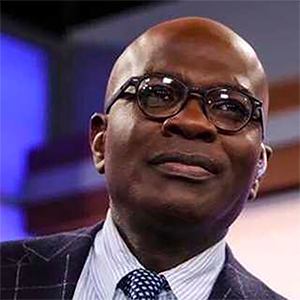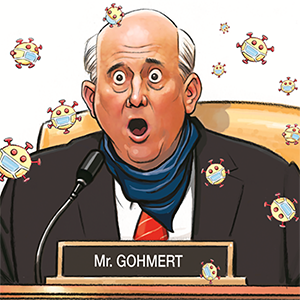Housing advocates worry states can't fill rental aid gaps if Trump cuts go through
Published in Political News
The Trump administration is pushing to reshape the federal housing safety net by slashing spending and shifting the burden of housing millions of people to states, which may be ill-equipped to handle the mission.
President Donald Trump’s recent budget request to Congress for fiscal year 2026, a preliminary plan released in early May and known as “skinny” because a more robust ask will follow, outlines a 44% cut to the U.S. Department of Housing and Urban Development, including a 43% reduction in rental assistance programs that support more than 9 million Americans.
Trump also wants to consolidate federal housing aid, which includes programs such as Housing Choice Vouchers and public housing, into block grants — or finite amounts of money that states would administer. The proposal also would cap eligibility for many aid recipients at two years, and significantly limit federal oversight over how states dole out housing aid to low-income, disabled and older renters.
The approach tracks suggestions outlined in the Heritage Foundation playbook known as Project 2025, in which first-term Trump advisers and other conservatives detailed how a second Trump term might look. The chapter on HUD recommends limiting a person’s time on federal assistance and “devolving many HUD functions to states and localities.”
To that end, Trump’s new housing aid budget request would put states in charge, urging them to create new systems and removing federal regulatory certainty that residents, landlords and developers rely on for low-income housing.
Trump’s request also proposes new rules, such as a two-year time limit on the receipt of Housing Choice Vouchers, formerly known as Section 8 vouchers, for households that do not include persons with disabilities or older adults. The vouchers, federal money paid directly to landlords, help eligible families afford rent in the private market.
Trump’s allies call the changes responsible, while detractors worry about rising homelessness among those who now receive aid.
Among the nearly 4.6 million households receiving HUD housing assistance in the 2020 census, the average household was made up of two people, and the average annual income was just under $18,000, according to a department report last year.
In testimony to Congress this month about the proposed fiscal 2026 budget, HUD Secretary Scott Turner said that HUD rental assistance is meant to be temporary, “the same way a treadway facilitates the crossing of an obstacle.”
“The block grant process will empower states to be more thoughtful and precise in their distribution and spending of taxpayer dollars,” Turner said.
The current budget reconciliation package, the tax-and-spending bill named the One Big Beautiful Bill Act, doesn’t address individual Housing Choice Vouchers or send federal housing aid back to states. However, it would offer tax credits to developers of affordable housing and expand areas that could qualify for additional favorable tax cuts. That bill passed the House and is now undergoing consideration in the Senate.
Trump’s hopes for next year
The president’s fiscal year 2026 budget request serves as an outline of the administration’s vision for next year’s federal spending.
Congress — specifically the House and Senate Appropriations committees — must draft, negotiate and pass appropriations bills, which ultimately decide how much funding programs like rental assistance will receive.
Trump’s budget request provides sparse details on how much housing aid the federal government would give to each state, and how it would oversee spending. Housing advocates and state agencies are concerned.
“A big piece of the proposal is essentially re-creating rental assistance as we know it, and turning it into a state rental assistance block grant program,” said Kim Johnson, senior director of policy director at the National Low Income Housing Coalition.
Experts say any resulting aid cuts would disproportionately affect families with children, older adults and individuals with disabilities, many of whom rely on rental subsidies and support to remain stably housed in high-rent markets.
“It would completely change how households might be able to receive rental assistance of any kind,” said Sonya Acosta, a senior policy analyst with the center. “It combines five of these programs that millions of people rely on, cuts the funding almost in half, and then leaves it completely to states to decide how to use that funding.”
That’s a shift most states can’t afford, say housing advocates.
A state-by-state analysis by the National Alliance to End Homelessness shows the highest rates of housing assistance are in the District of Columbia and Puerto Rico, along with a few blue states: Connecticut, Massachusetts, New York and Rhode Island.
“There’s no way to cut 43% of funding for rental assistance without people losing that assistance or their housing security,” said Johnson, of the National Low Income Housing Coalition.
And it’s not just urban centers that would be hit; rural areas of Mississippi and Louisiana also have high rates of federal housing aid.
“A rural community who solely relies on federal funding would be even more impacted,” Johnson added.
While state housing finance agencies proved during the pandemic that they can rapidly deploy federal funding, Lisa Bowman, director of marketing and communications at the National Council of State Housing Agencies, warned that the budget’s shift to block grants would require sufficient funding, a clear transition plan and strong oversight to ensure success.
Housing authorities are requesting further guidance from the feds and members of Congress, and more detail is needed on how any block-grant process would work, Bowman wrote in an emailed statement to Stateline.
“There is still a risk of overregulation and micromanagement with a block grant,” she wrote. “That said, for any type of new block grant to the states to work, there would need to be a transition period both to ensure states can build the necessary infrastructure and oversight and to test and train new systems with the private sector, local government, and nonprofit organizations that would interact with it.”
In New York City, which operates the nation’s largest housing voucher program, officials didn’t outline what steps they would take if Trump’s proposed cuts become reality, but a spokesperson said the plans would hurt residents.
Howard Husock, a senior fellow in domestic policy studies at the conservative-leaning American Enterprise Institute, believes the most innovative aspect of the Trump proposal is the introduction of time limits on housing assistance, a mechanism not currently used in HUD’s rental programs.
But he cautioned that a blanket two-year time limit — especially if applied to existing tenants — would be “a recipe for chaos,” particularly in high-need areas such as New York City. Instead, he supports a phased approach focusing on new, non-disabled, non-elderly tenants.
“Block grants would allow states to move away from one-size-fits-all and apply rules based on their own housing needs,” Husock said to Stateline in an interview.
Affordable housing advocates disagree.
“If passed, the president’s proposed budget would be devastating for all federally assisted tenants,” said Michael Horgan, press secretary for the New York City Housing Authority in a statement to Stateline. “Block grants, program funding cuts, and time limits will only worsen the current housing crisis.”
A recent analysis of 100 metro areas by the Center on Budget and Policy Priorities shows that households using housing vouchers are more likely to live in higher income areas than those with other federal rental assistance.
“There is a high share of these households using (other) federal rental assistance in higher-poverty areas,” Gartland, the center’s researcher, explained, noting that programs such as the Housing Choice Vouchers are a rare but essential tool for expanding housing mobility.
“If you’re cutting the programming by 40%, you’re just putting additional strain on that program and just limiting that potential.”
For housing providers, uncertainty is growing
For property owners and landlords, the proposed shift in federal assistance and housing aid to the states isn’t just a policy question, it’s a business risk.
Alexandra Alvarado, director of education at the American Apartment Owners Association, said many smaller landlords are closely following proposed changes to the voucher program.
“Section 8 is a stabilizing force, especially for mom-and-pop landlords,” she said. “Many have had loyal tenants for years and rely on that steady income.”
According to Alvarado, landlords — especially small operators — have come to view housing vouchers not just as a public good, but also as a reliable business model where rent is often on time and predictable.
But with the proposed changes placing administration in the hands of state governments, landlords fear a breakdown in consistency.
“If the administration is serious about shifting responsibility to states, landlords will need a lot more clarity, and fast,” Alvarado said. “These programs are supposed to offer certainty. If states run them inconsistently or inefficiently, landlords may exit the market altogether.”
The transition itself, she added, may be destabilizing.
“You’re turning an ecosystem upside down. Change too many parts of the system at once, and you risk unintended domino effects.”
While developers may benefit from new tax incentives in the budget, Alvarado said that doesn’t offset the instability small landlords fear.
“Most mom-and-pop landlords don’t want to evict or raise rent, especially during hard times,” she said. “They just want to provide stable housing and be treated fairly.”
_____
_____
©2025 States Newsroom. Visit at stateline.org. Distributed by Tribune Content Agency, LLC.

























































Comments